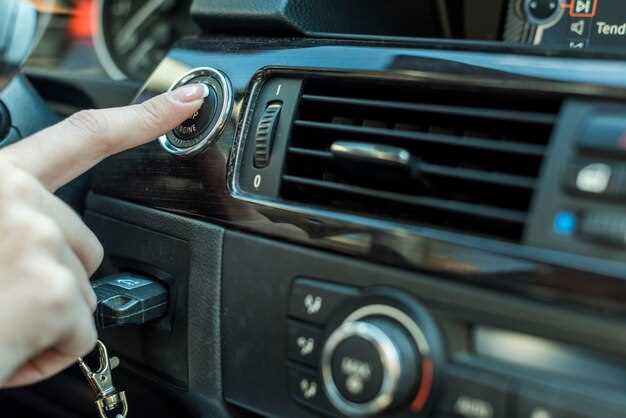
In an age where road safety and security are paramount, dash cams have emerged as essential tools for drivers around the world. Providing a first-hand account of incidents on the road, these compact devices not only capture stunning scenery but also serve as invaluable evidence in case of accidents or disputes. Installing a dash cam in your vehicle can significantly enhance your peace of mind while driving, allowing you to focus on the road ahead.
Choosing the right dash cam can seem overwhelming, given the plethora of options available. Factors such as video quality, ease of installation, and additional features like GPS tracking and night vision should be carefully considered. This guide will provide a clear roadmap for selecting the ideal dash cam for your needs, as well as step-by-step instructions for its installation, ensuring that you are equipped for any situation that might arise.
Once you’ve selected the perfect dash cam, proper installation is crucial to maximize its effectiveness. Whether you are a novice or a seasoned driver, this guide will simplify the installation process, ensuring that your device captures clear and reliable footage. With a dash cam securely mounted, you can drive confidently, knowing that you have a robust tool for both security and accountability.
Choosing the Right Dash Cam Model for Your Needs
Selecting the appropriate dash cam can significantly enhance your vehicle’s security and provide crucial evidence in case of incidents. Consider the following factors when making your choice:
-
Resolution:
Higher resolution provides clearer images and videos. Look for models that offer at least 1080p recording. Some advanced options provide 4K, which is beneficial for capturing finer details.
-
Field of View (FOV):
A wider field of view can capture more of the surroundings. Aim for a dash cam with a FOV of at least 120 degrees to ensure you cover the sides of your vehicle.
-
Night Vision:
Good performance in low-light conditions is crucial. Models equipped with infrared or low-light sensors enhance clarity during nighttime driving.
-
Storage Options:
Consider whether the dash cam uses microSD cards or cloud storage. A dash cam with loop recording features can overwrite old footage to maximize storage use.
-
GPS Functionality:
Dash cams with GPS can log your speed and location, offering added context to recorded incidents. This feature is especially useful for insurance claims.
-
Built-in Wi-Fi or Bluetooth:
Models that offer connectivity allow for easy transfer of footage to your smartphone or computer, facilitating quick access to videos.
-
Size and Design:
Consider the size of the dash cam, as larger models may obstruct your view. Sleek designs that can be discreetly mounted are preferred.
-
Additional Features:
Some advanced dash cams come with features such as parking mode, collision detection, and emergency recording. Evaluate which features align with your needs.
By assessing these factors, you can select a dash cam that fits your requirements and enhances your overall driving safety. Prioritize what is most important for your specific driving conditions and lifestyle for the best results.
Understanding the Installation Requirements for Dash Cams
When considering the installation of a dash cam, it is essential to understand the specific requirements for proper setup and functionality. First, assess your vehicle’s interior and determine the optimal placement for the camera. The most common locations include behind the rearview mirror and on the windshield, ensuring an unobstructed view of the road ahead.
Next, check the camera’s mounting options. Many dash cams come with adhesive mounts, suction cups, or rearview mirror mounts. Ensure that the chosen method fits securely and can withstand varying weather conditions, particularly in extreme temperatures.
Power supply is another critical factor. Most dash cams operate on a 12-volt power supply from the vehicle’s cigarette lighter or the fuse box. For a tidy installation, consider using a hardwire kit, which connects directly to the vehicle’s battery, providing a constant power source and reducing cable clutter.
It’s also important to verify the camera’s compatibility with vehicle systems. Some models may interfere with advanced driver assistance systems, so consulting the manufacturer’s specifications before installation is advisable.
If the dash cam has Wi-Fi capabilities or requires connection to a smartphone, ensure that you have a stable internet connection for updates and app functionality. Additionally, check for software updates that may enhance performance or fix bugs.
Finally, familiarize yourself with local laws regarding dash cam usage. Some jurisdictions have regulations about camera placement and recording laws that you must adhere to for legal compliance.
Step-by-Step Guide to Mounting Your Dash Cam Properly
Mounting your dash cam correctly is essential for optimal performance and safety. Follow these steps to ensure that your dash cam is positioned effectively.
First, select the ideal location on your windshield. The best spot is typically behind the rearview mirror, which provides a clear view of the road while minimizing obstruction of your field of vision.
Next, clean the mounting area thoroughly. Use a glass cleaner and a microfiber cloth to remove any dirt, debris, or smudges. A smooth surface enables better adhesion, ensuring that the dash cam stays securely in place.
Once the area is clean, prepare the dash cam mount. If your dash cam comes with a suction cup, moisten the suction pad slightly with water to enhance the suction. If it uses adhesive tape, ensure it is warm to aid in secure adhesion.
Attach the dash cam to the mount according to the manufacturer’s instructions. Press firmly to ensure it adheres properly. If using a suction mount, apply pressure for a few seconds to create a strong bond.
After securing the dash cam, route the power cable neatly along the edges of your windshield. Avoid loose wires that can distract you while driving. If possible, tuck the cable into the headliner or along the trim of the car for a clean installation.
Connect the power cable to your vehicle’s power outlet. If your dash cam has a hardwire option, consider having it installed to achieve a more streamlined look while eliminating the need for plugging and unplugging.
Finally, adjust the camera angle by tilting and swiveling it until you capture the desired field of view. Ensure that the lens is clean and free from obstructions. Test the recording function to confirm that everything is working properly.
By following these steps, you will mount your dash cam securely, optimizing its performance for capturing essential footage while enhancing your vehicle’s safety.
Connecting Your Dash Cam to Power: Options and Tips
When installing a dash cam, establishing a reliable power connection is essential for optimal performance. There are several methods to power your device, each with its own advantages and considerations.
The most common option is using the car’s cigarette lighter socket. Most dash cams come with a power adapter that plugs directly into the socket. This method is straightforward–simply connect the adapter and route the cable along the windshield for a clean installation. However, keep in mind that the power will only be supplied when the vehicle is on, which means the dash cam will turn off when the engine is off unless otherwise specified.
Another method is hardwiring the dash cam directly to the vehicle’s electrical system. This option is more complex and usually requires a hardwire kit, which connects to the fuse box. The significant advantage of hardwiring is that it allows the camera to operate even when the vehicle is off, enabling features like parking mode. Ensure to use a fuse tap to prevent overloading the circuits and causing damage.
For those who prefer flexibility, using a portable battery pack can be a viable alternative. This option allows you to position the dash cam in various locations without being tethered by a power cord. However, battery packs will need to be recharged periodically, adding an extra step to your routine.
When connecting your dash cam, pay attention to the power cable routes to avoid interference with airbags or obstructing any vital components. Additionally, select a cable length that suits your installation to minimize excess wire that might clutter the interior.
Finally, consider implementing a switch or circuit breaker for the hardwired setup to easily disconnect the power when needed, such as during long-term parking. Taking the time to carefully plan and execute the power connection can significantly enhance the functionality and longevity of your dash cam.
Setting Up the Dash Cam Settings for Optimal Performance

Configuring your dash cam correctly ensures that you capture high-quality footage and maximize its effectiveness. Here are key settings to consider when setting up your device:
| Setting | Recommendation | Description |
|---|---|---|
| Resolution | 1080p or higher | Choose a high resolution for clearer images and better detail in recorded videos, especially for reading license plates. |
| Frame Rate | 30 fps or higher | Set the frame rate to at least 30 frames per second to ensure smooth recording, particularly during quick movements. |
| Field of View | Wide angle (at least 120 degrees) | A wider field of view captures more of the surroundings, enhancing your awareness of potential incidents. |
| Night Vision | Enabled | Activate night vision if available, ensuring clarity in low light conditions such as nighttime driving. |
| Storage Format | Loop recording | Set the dash cam to loop record to overwrite old footage, ensuring continuous recording without manual intervention. |
| G-Sensor Sensitivity | High | Adjust the G-sensor sensitivity to high so that any significant impact triggers the emergency recording mode. |
| Wi-Fi Connectivity | Enabled | If your dash cam supports Wi-Fi, keep it enabled for easy video transfer and settings adjustment through your smartphone. |
| GPS Functionality | Enabled | Use the GPS feature if available to log speed and location data, which can be crucial during incidents. |
Regularly check and update the settings based on your driving habits and requirements. Ensuring that all features are properly configured will provide the best possible protection on the road.
Regular Maintenance and Troubleshooting for Your Dash Cam
Regular maintenance is essential for ensuring the longevity and optimal performance of your dash cam. Begin by checking the camera lens for dirt or smudges. Use a microfiber cloth to gently clean the lens, ensuring that your recordings are clear and unobstructed. It is advisable to perform this check on a monthly basis or before long trips.
Next, inspect the power source and connections. Ensure that the power cable is securely plugged into the dash cam and your vehicle’s power outlet. Look for any signs of wear or damage to the cable, which could prevent the camera from functioning properly. If the camera is powered by a battery, consider replacing it every few years or when you notice a decline in performance.
Regularly review the recorded footage stored on your dash cam. This practice not only helps you keep your files organized but also ensures that the storage is not full. Most dash cams have a loop recording feature that overwrites the oldest footage, but it’s wise to back up important files before they are erased. Checking your recordings can also help identify any anomalies in video quality or frame rate that may indicate an issue.
If your dash cam experiences problems, such as not turning on or failing to record, first power cycle the device. Disconnect it from the power source, wait a minute, and then reconnect it. If the problem persists, check the memory card for issues. Ensure it’s properly formatted and compatible with your dash cam. Try replacing the memory card if you suspect it is faulty.
In cases where the footage is corrupted or missing, consider reformatting the memory card using your dash cam’s settings menu or a computer. Be aware that reformatting will erase all data on the card, so back up any necessary recordings first. If you encounter ongoing issues, consult the manufacturer’s troubleshooting guide or reach out to customer support for further assistance.
Lastly, keep the firmware of your dash cam updated. Manufacturers often release updates that fix bugs or enhance functionality. Regularly check the manufacturer’s website for the latest firmware version and follow the provided instructions to update your device. Performing regular maintenance and addressing any issues promptly will ensure that your dash cam remains a reliable guardian on the road.















